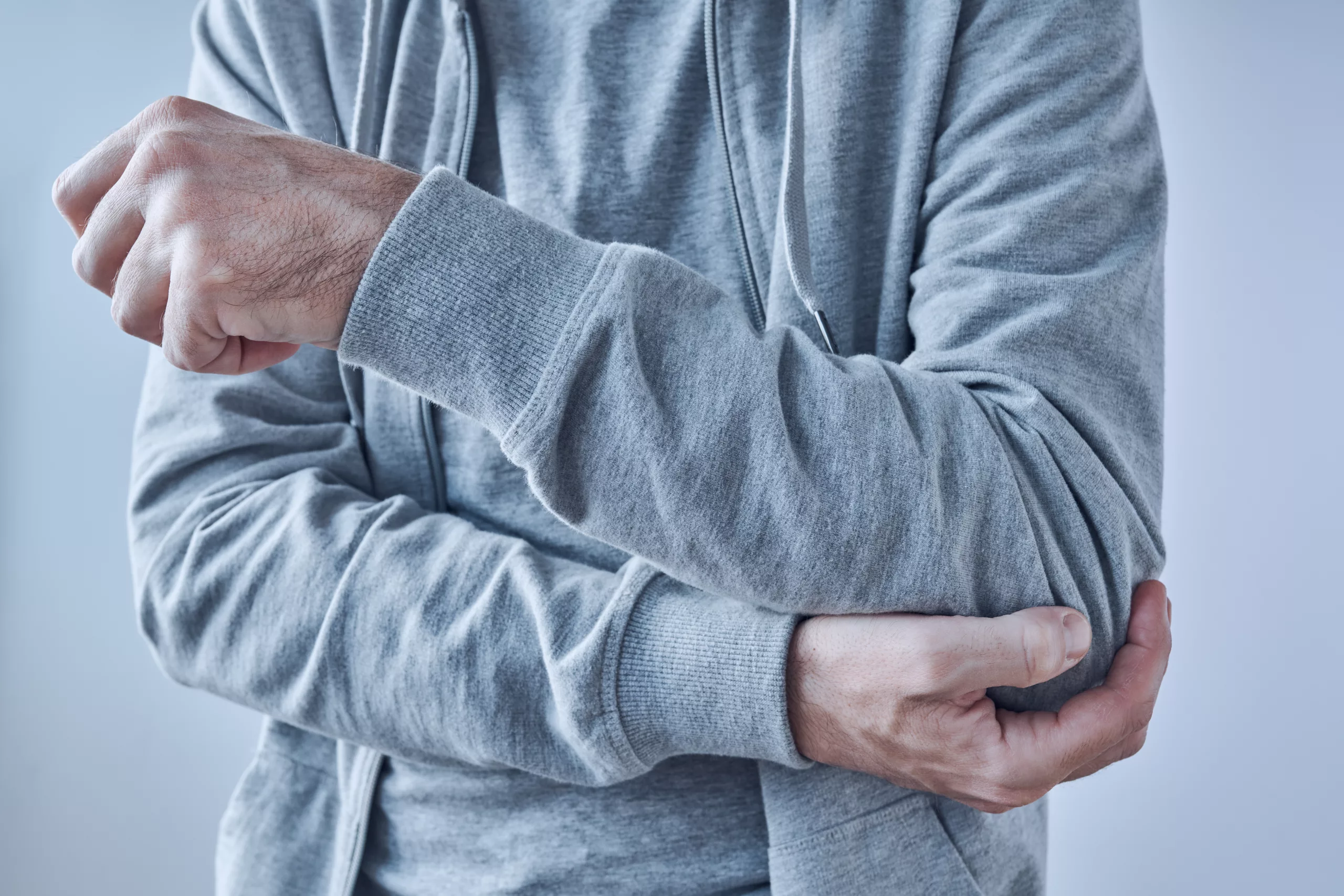
Tennis and Golfer’s Elbow: Understanding Medial and Lateral Epicondylitis
Have you felt an intense pain in your elbow after a game of tennis or golf? You might be dealing with epicondylitis, commonly known as tennis elbow or golfer’s elbow. Don’t let the names fool you; these ailments aren’t limited to athletes. Let’s dive into the complexities of these conditions.
Epicondylitis and its Causes
Epicondylitis is associated with changes in the tendons connected to your elbow’s epicondyles. These are the bony prominences on either side of your elbow. Often due to repetitive strain, these conditions cause pain and tenderness over the affected areas.
Epicondylitis can arise from various circumstances:
Traumatic Epicondylitis: This occurs with a forceful blow to the elbow or a sudden contraction of the wrist-moving muscles.
Non-Traumatic Epicondylitis (most common): This results from repetitive minor injuries to the attachment points of certain forearm muscles.
The specific activities that can trigger or worsen these conditions differ based on whether it’s tennis elbow or golfer’s elbow.
Epicondylitis: The Process and Progression
In the early stages, conditions like tennis and golfer’s elbow may display symptoms similar to inflammation. Pain and discomfort during certain activities are common. An individual might start using the involved muscles less to avoid the discomfort or pain, a behaviour known as pain guarding, which can worsen the issue. Off loading the tendon too much lessens its ability to withstand loading, making is more prone to overloading in the long-term.
As epicondylitis progresses into its late stage, a degenerative condition, the collagen organization in our tendons becomes disturbed. However, our bodies naturally attempt to repair this disrupted collagen. Despite our body’s best efforts, these late-stage changes highlight the need for appropriate management and treatment strategies. For more information on the specifics of tendon injuries check out our blog post: A Guide to Tendinopathy: Risk Factors, Treatment Guidelines and 10 Things to Avoid
Signs and Symptoms of Epicondylitis
Symptoms for tennis elbow and golfer’s elbow include pain during activities involving specific muscle movements the wrist and elbow, discomfort when pressing the affected areas, and decreased grip strength. With medial epicondylitis pain at the wrist is often with flexion, or from gripping with the palm up. Lateral epicondylitis is painful with wrist extension, or from gripping with the palm down.
The Treatment Approach
The main goals of treatment are managing pain, maintaining movement and muscle strength, and improving the affected tendon’s capacity to handle load.
This process generally involves three phases:
Phase 1: Light exercises that don’t increase pain and therapeutic modalities like ultrasound, massage, and electrical stimulation may be used during this stage. Education is also key at this point to help you get through activities of daily living with less discomfort. It is also during this phase that you may be recommended to wear a counter force brace.
Phase 2: With pain under control the focus shifts to progressive exercises. The goal here is to build tendon load tolerance through a series of more challenging exercises.
Phase 3: The goal is a full return to activity with exercises that ensure the tendon can handle increased loads. Proper equipment fitting is also ensured, with regular monitoring for symptom recurrence.
Examples of Exercises
For tennis elbow, some examples include:
Grip strength exercises: An elastic band is woven around all five fingers, extended, and then slowly returned to the start position.
Eccentric strength exercises: These can be performed with the elbow supported in full extension, the forearm pronated, and the wrist fully extended hanging over a table. The exercise involves slowly moving into full wrist flexion and returning to the start position.
For golfer’s elbow, exercises can include:
Ball squeezes: This involves holding a tennis ball in the palm of the hand, squeezing and holding for a few seconds.
Pronation/supination strength exercises: These involve holding a hammer in the hand with the elbow flexed to 90 degrees and the wrist in neutral. The forearm is slowly rotated to full pronation, returned to start, then rotated to full supination.
Manual Therapy
Techniques like mobilization with movement (the patient makes a fist while the therapist performs a lateral glide to the radial side), joint mobilization techniques to the cervical/thoracic spine, kinesiotape to manage pain, and acupuncture may be employed.
The treatment plan should be individualized to meet the patient’s needs. A key factor in successful treatment is the collaboration between patient and physiotherapist. Partnering with the team at Connect Physiotherapy & Exercises ensures a comprehensive, patient-centered approach that addresses the root cause of symptoms and promotes long-term recovery.
*Remember, while knowledge is power, self-diagnosis and treatment can be risky. While this blog provides useful information, it’s essential to see a trained professional for proper diagnosis and management. Every person is unique, and so is their recovery journey. At Connect Physiotherapy & Exercise, we’re all about personalized care. Let us help you navigate your path to recovery.
References
Tosti, R., Jennings, J., & Sewards, J. M. (2013). Lateral epicondylitis of the elbow. The American Journal of Medicine, 126(4), 357.e1-357.e6.
Ciccotti, M. C., Schwartz, M. A., & Ciccotti, M. G. (2004). Diagnosis and treatment of medial epicondylitis of the elbow. Clinics in Sports Medicine, 23(4), 693-705.
Ahmad, Z., Siddiqui, N., Malik, S. S., Abdus-Samee, M., Tytherleigh-Strong, G., & Rushton, N. (2013). Lateral epicondylitis: A review of pathology and management. The Bone & amp; Joint Journal, 95-B(9), 1158-1164.

